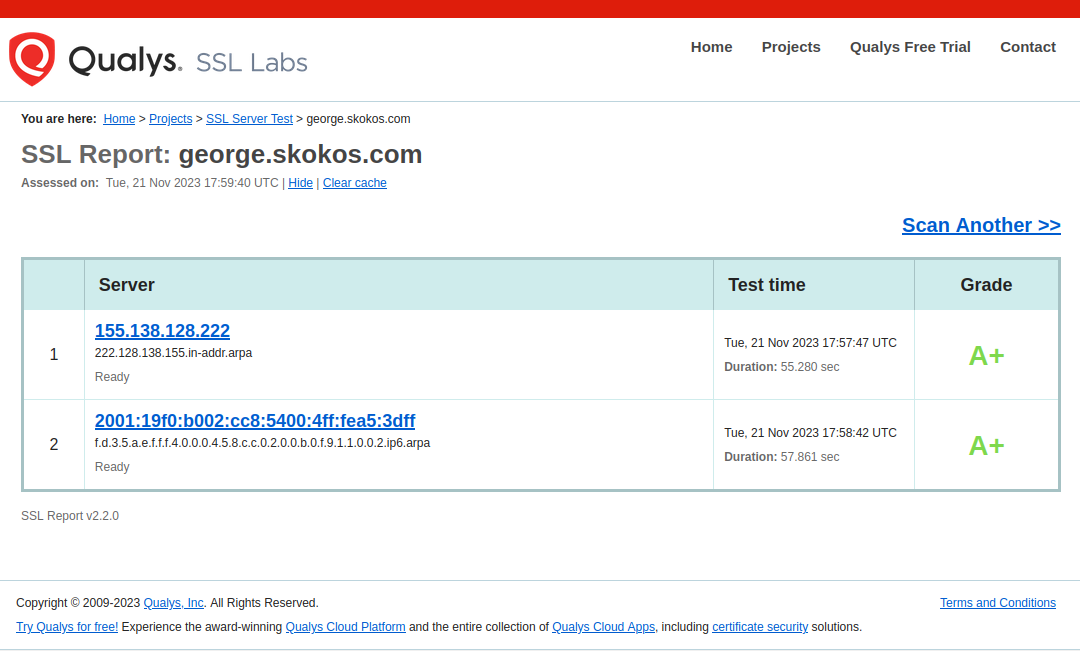While employed with RHEA Technologies Lab (R&D) in Gatineau, Quebec, I learned a lot about Cybersecurity. My favourite online cybersecurity tool that I use most often is the Qualys SSL Labs – SSL Server Test which analyzes and reports on industry standard protocols and ciphers used by web servers and browsers.
Most of the sites I’ve tested score a rating of “A” with only a handful of sites I’ve tested scoring an “A+”, such as my own personal resume site: george.skokos.com.
Some of the sites I’ve tested rated a “B” which is a clear indicator that that web server was built by amateurs! A rating of “B” is what you get when you build a server with the linux OS, such as Ubuntu or Debian, install the Apache2 web server software, and then brag to your boss that you are so smart because you can build a web server in only 30 minutes! WRONG! Building a web server using the plain vanilla default configuration will result in a web site that is easily “hacked”. It takes time, knowledge, skill, and experience to take a plain vanilla web server and configure it to be secured to a rating of “A”. It takes twice as much time to secure this same web server to a rating of “A+”.
The major Canadian Bank that I have accounts with scores a rating of “A”, not “A+”, I think that I will refrain from doing online banking in the future!

For those that are curious, my personal Portfolio website, george.skokos.com is hosted on a virtual machine I rent from Vultr.com, I built this machine from the ground up beginning with a Vultr base image of Debian 11. I first installed Docker and Docker Compose and then launched a WordPress container upon which I installed the Divi theme since I purchased a lifetime license for Divi a few years ago.
I rent two virtual machines from Vultr, one in a Canadian Data Centre and another in an American Data Centre. Each VM is nearly identical with Debian 11, Cloud Compute, AMD High Performance, 2GB Memory, 1vCPU, 50 GB NVMe storage, and 3 TB Bandwidth per month. I installed Docker, Docker Compose, Portainer, PowerDNS, WordPress, Citadel (for email), WireGuard VPN, and other containers that I occasionally experiment with.
The reason why I chose to deploy two small virtual servers instead of one big VM is that I manage my own DNS records using PowerDNS and having two DNS servers, a Primary and a Secondary, is a mandatory requirement for hosting your own DNS. Also, I have two VPN endpoints, one in Canada and one in the USA, so I can sidestep Canadian online content censorship.
Feel free to message me if you need advice hosting your own services in the Cloud.
Click here to sign up using the standard Vultr Referral Program and I will receive $10 credit.
For a limited time, Vultr is offering a Give $100, Get $35 so new customers will receive $100 in Credit and I receive a referral credit of $35 (U.S. Dollars)
